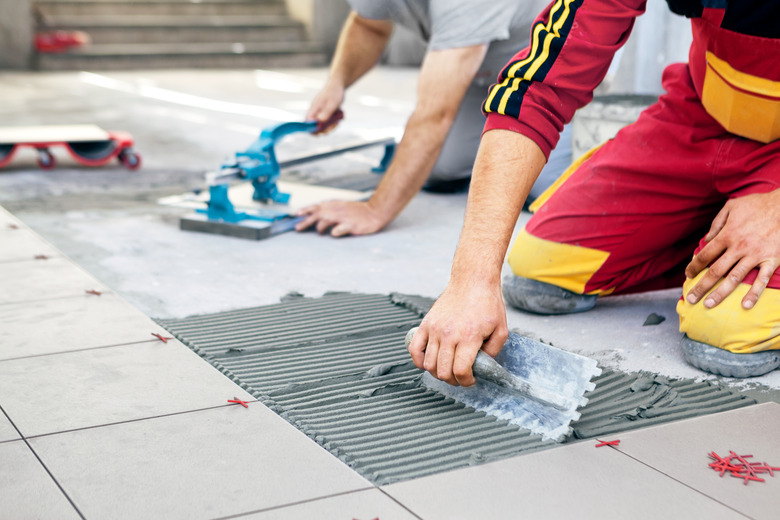How To Remove Grout Haze And Seal Grout On Tile
You've laid the tiles in your bathroom or kitchen and applied the grout. Good work, but the job isn't done yet. Most grouts leave a thin cloudy layer on the tiles that you won't notice until it has dried, which could take several hours, depending on the temperature and humidity. This is grout haze, and removing it gets harder the longer you leave it.
Even after you clean off the grout haze, you still have a little more work to do before you can call the job finished. Standard cementitious grouts need to be sealed or they'll absorb moisture and remain prone to staining. Fortunately, this job is much less demanding than cleaning grout haze, especially if you use a commercial grout sealer applicator.
How to Remove Grout Haze
How to Remove Grout Haze
While it's true that grout haze becomes harder to remove the longer you leave it, you can't start cleaning it right after you finish grouting. You have to wait for the grout to harden. However, if you wait too long, you'll have a more difficult job. If the tiles are anything but smooth porcelain or glazed ceramic, too long means tomorrow. It takes grout from two to three hours to stiffen, and that's the longest that a professional tiler who knows how to clean new tile before sealing usually waits.
If you get to the grout haze early, you can usually wipe it off with dry cheesecloth. That's what a pro who knows how to remove grout haze does. Need more wiping power? Wet a terry cloth towel and use it to wipe the tiles. The water often reactivates the cement in the haze and makes it easier to remove. Just be careful not to use too much water if the grout hasn't fully cured. You can also clean off the rubber float you used for grouting, wet it and use it to wipe off the grout haze. Be sure to rub carefully along the grout lines. That's where haze and excess grout tends to accumulate.
You May Need a Commercial Tile Haze Remover
You May Need a Commercial Tile Haze Remover
If your schedule doesn't give you time to clean off the haze on the day you actually do the grouting, you may need the help of a cleaner. You can use a commercial acidic grout haze cleaning compound. You can also make a homemade grout haze cleaner using household vinegar. Mix 1 part vinegar to 4 parts water and use this to wipe down the tiles. Using vinegar to remove grout haze is not a good idea when cleaning stone or other porous tiles, however. That's because acids (yes, vinegar is an acid) can damage them. Opt instead for a non-acidic grout haze remover, which you'll find on the same store shelf as the acidic cleaners.
How to Seal Grout
How to Seal Grout
If you know how to remove haze from tile, then you know how to clean new tile before sealing because that's basically all there is to it. However, you need to wait an extra 72 hours before sealing cementitious grout to give it time to cure.
Most clear commercial sealers are urethane products not unlike water-based varnish. You can apply the sealer with an artist's paintbrush, but it's easier to purchase it in a bottle with a built-in brush or roller applicator. Wait about 5 or 10 minutes after applying the sealer, then go back to wipe the excess material from the tiles with paper towels. The goal is to get the sealer off the tiles while it's still soft enough to wipe away.
You don't have to seal epoxy- or urethane-based grout, and professionals actually recommend that you don't. On these types of nonporous grouts, sealers do more harm than good. If you're not sure whether or not to apply a sealer, check the manufacturer's recommendations on the grout container.
